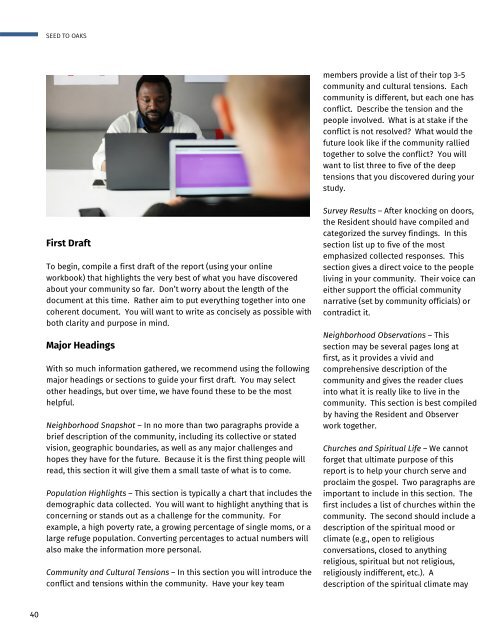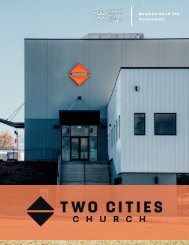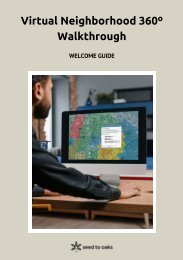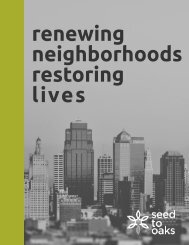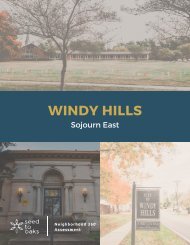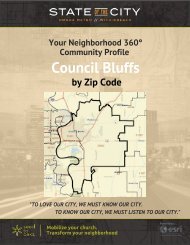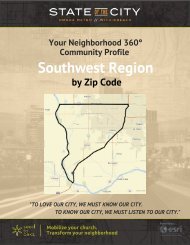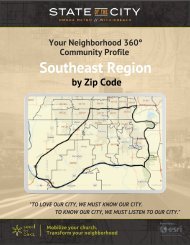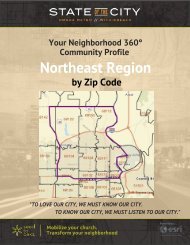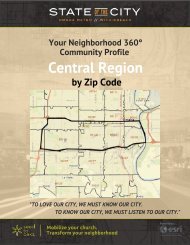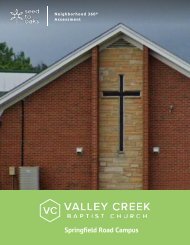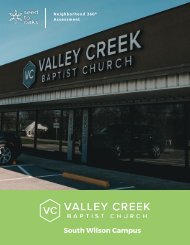Create successful ePaper yourself
Turn your PDF publications into a flip-book with our unique Google optimized e-Paper software.
SEED TO OAKS<br />
members provide a list of their top 3-5<br />
community and cultural tensions. Each<br />
community is different, but each one has<br />
conflict. Describe the tension and the<br />
people involved. What is at stake if the<br />
conflict is not resolved? What would the<br />
future look like if the community rallied<br />
together to solve the conflict? You will<br />
want to list three to five of the deep<br />
tensions that you discovered during your<br />
study.<br />
First Draft<br />
To begin, compile a first draft of the report (using your online<br />
workbook) that highlights the very best of what you have discovered<br />
about your community so far. Don’t worry about the length of the<br />
document at this time. Rather aim to put everything together into one<br />
coherent document. You will want to write as concisely as possible with<br />
both clarity and purpose in mind.<br />
Major Headings<br />
With so much information gathered, we recommend using the following<br />
major headings or sections to guide your first draft. You may select<br />
other headings, but over time, we have found these to be the most<br />
helpful.<br />
Neighborhood Snapshot – In no more than two paragraphs provide a<br />
brief description of the community, including its collective or stated<br />
vision, geographic boundaries, as well as any major challenges and<br />
hopes they have for the future. Because it is the first thing people will<br />
read, this section it will give them a small taste of what is to come.<br />
Population Highlights – This section is typically a chart that includes the<br />
demographic data collected. You will want to highlight anything that is<br />
concerning or stands out as a challenge for the community. For<br />
example, a high poverty rate, a growing percentage of single moms, or a<br />
large refuge population. Converting percentages to actual numbers will<br />
also make the information more personal.<br />
<strong>Community</strong> and Cultural Tensions – In this section you will introduce the<br />
conflict and tensions within the community. Have your key team<br />
Survey Results – After knocking on doors,<br />
the Resident should have compiled and<br />
categorized the survey findings. In this<br />
section list up to five of the most<br />
emphasized collected responses. This<br />
section gives a direct voice to the people<br />
living in your community. Their voice can<br />
either support the official community<br />
narrative (set by community officials) or<br />
contradict it.<br />
Neighborhood Observations – This<br />
section may be several pages long at<br />
first, as it provides a vivid and<br />
comprehensive description of the<br />
community and gives the reader clues<br />
into what it is really like to live in the<br />
community. This section is best compiled<br />
by having the Resident and Observer<br />
work together.<br />
Churches and Spiritual Life – We cannot<br />
forget that ultimate purpose of this<br />
report is to help your church serve and<br />
proclaim the gospel. Two paragraphs are<br />
important to include in this section. The<br />
first includes a list of churches within the<br />
community. The second should include a<br />
description of the spiritual mood or<br />
climate (e.g., open to religious<br />
conversations, closed to anything<br />
religious, spiritual but not religious,<br />
religiously indifferent, etc.). A<br />
description of the spiritual climate may<br />
40


